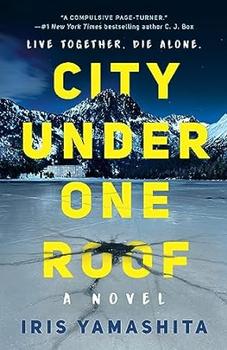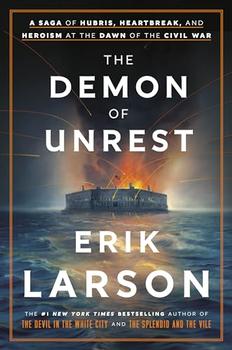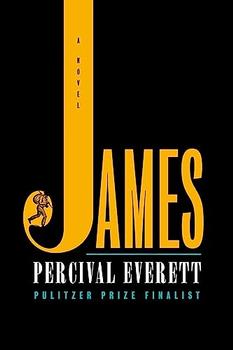Write your own review!
JHSiess
A Riveting & Atmospheric Mystery Set in Alaska
Debut author Iris Yamashita says City Under One Roof was inspired by a documentary she viewed more than twenty years ago about the city of Whittier, Alaska where all of the residents lived in a single building. She knew there had to be a story to be told in such an intriguing setting.
Whittier, Alaska is about sixty miles southeast of Anchorage, at the head of Passage Canal. It is situated between the spectacular mountains and an ice-free port, surrounded by three glaciers. It serves as the gateway to the Prince William Sound wilderness. Snowfall in Whittier averages twenty-two feet per year, but every summer tourists visit the city, many arriving aboard cruise ships. The city is also accessible via the Anton Anderson Memorial Tunnel through Maynard Mountain. At two-and-a-half miles long, it is the longest highway tunnel in North America, built to withstand temperatures up to -40 degrees Fahrenheit temperatures and winds of one hundred fifty miles per hour. In 2000, the one-lane tunnel was made passable by cars in addition to trains, each navigating the tunnel in both directions. The tunnel is aired out between trips with jet turbine ventilation. The single lane of vehicle traffic travels directly over the slightly sunken railroad track, and there are safe-houses within the tunnel -- small buildings that can be used in the event of a severe earthquake, vehicle fire, or other emergency.
Whittier was once known as Camp Sullivan. During World War II, the U.S. Army built the port and railroad to transport soldiers there. Following the war, two high-rise buildings were erected and the Army continued operating the port until 1960. In 1964, the 9.2 magnitude "Good Friday Earthquake," still the largest on record in the U.S., caused over ten million dollars in damage, triggered tsunamis, and claimed forty-three lives. It also rendered one of the city's two large buildings uninhabitable. Incorporated in 1969, the city still boasts a three-person year-round police force and volunteer fire and rescue squad. The city's two hundred and seventy-two or so citizens all reside in a fourteen-story condominimum known as Beghic Towers Incorporated which also houses the hospital, school, and city government offices.
Yamashita set City Under One Roof in fictional Point Mettier, Alaska, modeled after Whittier but with some distinct differences, including additional pedestrian tunnels such as the one used by the town's children to get to their schoolroom. In the story, the shell of one building, destroyed by the 1964 earthquake, remains standing and the diverse group of two hundred and five residents all live in the Davidson Condos, known as the Dave-Co where the post office, a church, an infirmary, and a general store that sells "touristy tchotchkes" are situated. There is also an inn within the structure. Winter lasts for about eight months with temperatures as low as minus thirty-five degrees, and Alaska is thrust into darkness for nearly the entire day for several months of the year. Life in a place like Point Mettier does not appeal to everyone, and the permanent, long-time residents are there for very speciic reasons. Some love the scenic setting, the isolation, or living within such a closeknit community. But most are running away from something or someone, including her protagonist.
In fact, when Yamashita visited Whittier while researching the book, she discovered that when the tunnel only accommodated train travel, one of the female residents was protected by the train conductor who prevented her abusive ex-husband from boarding and traveling to Whittier. A disproportionately high number of women in Alaska have endured domestic violence, in part because of the scant police enforcement of laws and restraining orders designed to protect them in remote regions. She explores the theme of fictional Point Mettier functioning as a safe haven for victims by incorporating that history into the story. Even now that vehicle traffic flows into Point Mettier, the toll booth operator tells Cara that he maintains a list of "no-gooders" to watch out for, but acknowledges that other than checking identification and attempting to dissuade them with stories about the tunnel shutting down there is little he can do to prevent them from entering the city.
Yamashita relates the story from three perspectives. People who travel through the tunnel have the sensation of falling down a rabbit hole and ending up in a strange and crazy wonderland full of quirky characters. Cara Kennedy is an "otter," which is what the townspeople call outsiders. She is a detective with the Anchorage police who arrives in Point Mettier because she is investigating what might be a murder case. Yamashita likens her to Alice in Wonderland, chasing clues as to why body parts have been washing up on the area's shores. As the book opens, in fact, Amy Lin, a local teenager, has stumbled upon a hand and foot. More than a year ago, Cara and her husband, Aaron, decided to take a much-needed vacation with their young son, Dylan. They rented a cabin in Talkeetna near Denali National Park and on the third day, Aaron took Dylan, along with his camera gear, on a morning hike to see snowshoe hares. They never returned. Cara wants to investigate whether their disappearance could be linked in any way to the body parts. When an avalanche closes the tunnel, she is forced to remain in Point Mettier. She teams up with Chief Sipley and the town's only police officer, Joe Barkowski, but does not reveal significant details about what prompted her to travel to Point Mettier. Cara is a highly skilled police professional who has sustained a horrible tragedy. She is determined to get answers, and willing to take whatever risks are required in order to do so. She is also likable and empathetic, particularly as Yamashita gradually reveals more details about the events that compelled her to visit Point Mettier.
Seventeen-year-old Amy Lin has lived in Point Mettier for fourteen years with her mother, who operates a business serving "barely passable" Chinese food that Amy Lin is tasked with delivering. She has recently learned that the details about her family's history and origins that she always accepted as true were actually manufactured by her mother. That knowledge has stirred up perplexing feelings and emotions for her, even though the revelations have given her a new understanding of her mother and her motivations. Day-to-day life in Point Mettier is challenging for Amy Lin due to a lack of activities, even though there are occasional school field trips. She is certain that were it not for Internet access connecting the little town to the rest of the world, she would not survive. There is nothing perplexing, however, about her feelings for her boyfriend, Even Spence Blackmon, who moved to Point Mettier about seven years ago with his younger brother, Troy, and their mother, Debra, who is one of the schoolteachers. Amy and Spence sneak off, along with the other local kids, to the remains of the next-door Walcott Building which used to house a bowling alley, auditorium, movie theater, and indoor pool. When Even and his family go missing, Amy is determined to find them. She is intuitive, observant, and resilient -- the white rabbit to Cara's Alice, according to Yamashita.
Lonnie Mercer is Yamashita's Mad Hatter. She wears a different colored beret every day, speaks in what Yamashita describes as "word salad" (strings of free-flowing, internal word associations) and has an undisclosed mental disability. She lives in fear of being sent back to the Institute where she was forced to live for a time after her mother was killed by an abusive boyfriend. She orders the same thing from Amy Lin's mother every day -- fried rice -- and is devoted to her pet moose, Denny. Chief Sipley looks after Lonnie and instructs her not to speak to Cara, ask her any questions or answer any questions Cara might pose, reminding her, "You don't want to end up back at the Institute, do you?"
Yamashita surrounds her three main characters with an eclectic group of supporting players, including the innkeeper, the manager of the general store, a gang of criminals whose headquarters are located in a nearby village, and a lonely lounge singer who was once a successful recording artist in Japan. Point Mettier is, of course, a central character in the tale, as well -- brooding, claustrophobic, and holding the secrets of its inhabitants. Yamashita's prowess as a screenwriter translates well to a lushly descriptive narrative that brings to life not just her compelling characters, but also the fascinating little town of Point Mettier and the surrounding area. She convincingly details how a place as naturally beautiful as the region can also be eerily menacing and frightening. She effectively melds her characters' emotional struggles with the procedural aspects of Cara's investigation, keeping the action moving forward at a fast pace and accelerating the tension as Cara and Officer Barkowski grow closer to each other and to identifying the individual whose partial remains were discovered by Amy Lin.
In City Under One Roof, some of the mysteries explored are wrapped up in a cohesive, satisfying manner. However, as the story proceeds, Yamashita introduces intriguing additional details pertaining to others and refrains from providing a tidy ending to those plots. Indeed, City Under One Roof is just the first entertaining installment in what promises to be a riveting and atmospheric series featuring Yamashita's colorful and eccentric cast of characters.
Thanks to NetGalley for an Advance Reader's Copy of the book.

 Book Reviewed by:
Book Reviewed by:


